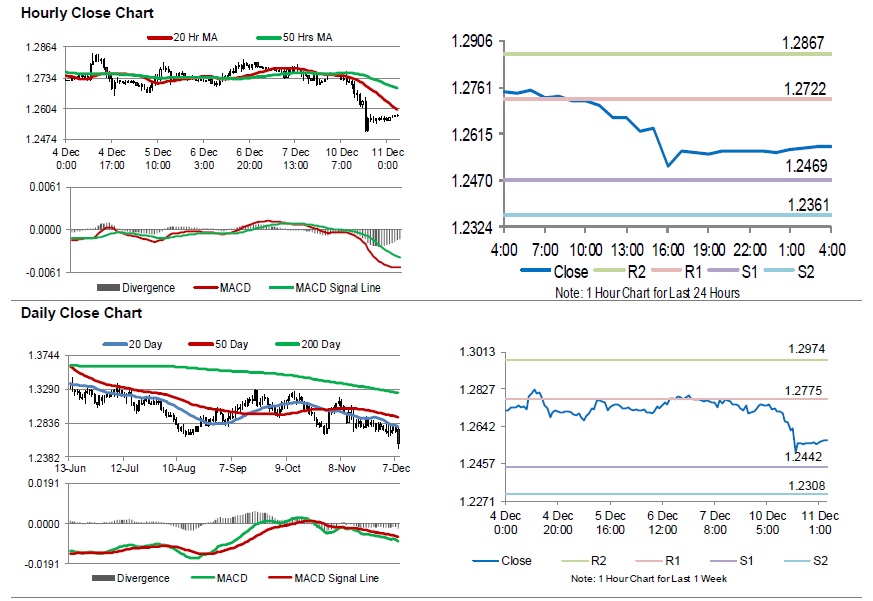For the 24 hours to 23:00 GMT, the GBP declined 1.47% against the USD and closed at 1.2563, after UK’s Prime Minister, Theresa May, decided to indefinitely postpone a critical vote on Brexit agreement.
Data indicated that UK’s gross domestic product (GDP) dropped 0.4% in three months to October, in line with market forecasts and driven by fall in car sales, stagnation in manufacturing and Brexit uncertainty. In the September quarter, the GDP had risen 0.6%. Additionally, visible trade deficit widened to a level of £11.9 billion in October, compared to a revised deficit of £10.7 billion in the previous month. Market participants had expected the nation to record a deficit of £10.5 billion. Moreover, Britain’s manufacturing production unexpectedly fell 1.0% on an annual basis in October, marking its first drop since October 2016. In the previous month, manufacturing production had recorded a gain of 0.5%. Also, the nation’s industrial production dropped 0.8% on a yearly basis in October, marking its first fall since April 2017 and compared to a steady reading in the prior month. Market participants had envisaged industrial production to slid 0.1%.
Additionally, UK’s construction output retreated 0.2% on a monthly basis in October, less than market consensus for a fall of 0.5%. In the preceding month, construction output had registered an advance of 1.7%.
In the Asian session, at GMT0400, the pair is trading at 1.2576, with the GBP trading 0.10% higher against the USD from yesterday’s close.
The pair is expected to find support at 1.2469, and a fall through could take it to the next support level of 1.2361. The pair is expected to find its first resistance at 1.2722, and a rise through could take it to the next resistance level of 1.2867.
Going forward, investors would await UK’s average weekly earnings and ILO unemployment rate, both for October, slated to release in a few hours.
The currency pair is trading below its 20 Hr and 50 Hr moving averages.

